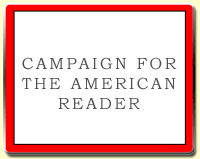 Lars Iyer's new novel is Nietzsche and the Burbs.
Lars Iyer's new novel is Nietzsche and the Burbs.At Book Marks he shared five great books about visionary youth with Jane Ciabattari, including:
Ferdydurke by Witold GombrowiczRead about the other entries on the list.
Witold Gombrowicz’s mapcap novel Ferdydurke is a celebration of immaturity, mocking convention, propriety, officialdom and high culture. However, this is no straightforward hymn to youth—the protagonist, magically turned from a thirty-year-old writer into a teenage schoolboy—suffers all kinds of humiliations. Still, it’s clear where Gombrowicz’s sympathies lie. Ferdydurke depicts the anarchy of youth—its wildness, its impatience—but it also exposes the anarchism at the base of our schools, our families, and of middle-class life. All authority, Gombrowicz’s novel declares, is usurped. Chaos reigns.
Jane Ciabattari: Why was Ferdydurke banned in Poland for many years after its publication in 1937? What’s so dangerous about its depiction of youth’s anarchy?
Lars Iyer: In a word, ludism. Youth’s queer anarchy, in the rolling riot of Ferdydurke, is the opposite of self-solemnity, of the ponderous weight of adulthood, of the staidness of the old order, of the old monosexualities, just as it laughs at the new order, too: at the new avatars of the Modern, of the Young Girl (a figure later borrowed by the Tiqqun collective) and her right-thinking family. The spirit of youth, of humor, serves no ideological certitude, thumbing its nose at the Nazi-occupiers of Poland and the communists who succeeded them.
--Marshal Zeringue



